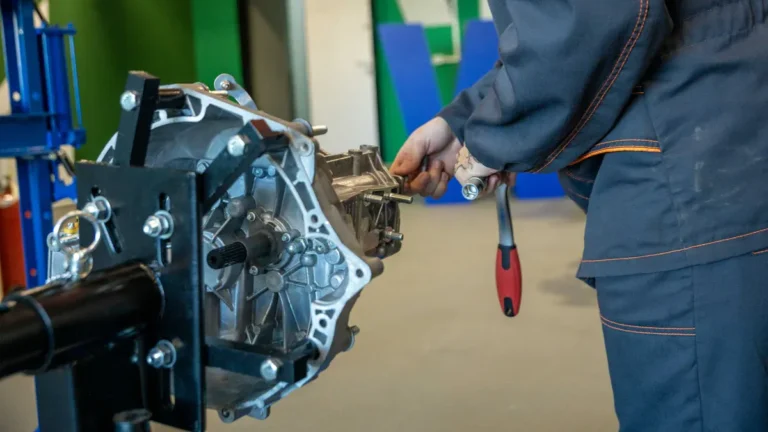Power steering owes its start to initial patents and concepts around the 1900s, but it was American engineer Francis W. Davis in the 1920s and 1930s who developed the earliest practical hydraulic system. This innovation gained real traction during World War II as it proved essential for maneuvering heavy military vehicles. It wasn’t until 1951 that power steering appeared in a passenger car, debuting on the Chrysler Imperial. This breakthrough ushered in a new age of easier, more comfortable driving, gradually spreading through the automotive industry and transitioning from hydraulic to electric systems in later decades.
Early Patents and Pioneering Power Steering Concepts
Although initial ideas and patents for power steering date back to the late 19th century, the development of practical power steering systems took many decades.
Pioneering Patent Milestones include Robert E. Twiford’s 1900 patent, which integrated power steering into an all-wheel drive system, and a reported installation attributed to Fitts in 1876 on an antique car.
These Prototype Mechanisms showed promise but were not widely adopted.
Engineers experimented with various designs, often focusing on large vehicles where steering effort was a real challenge.
Each new attempt brought the technology closer to something usable in everyday cars.
These pioneering efforts laid the foundation for future innovations, making steering less of a chore and more of a smooth experience.
The progression from concept to reality was long, but each step mattered.
Francis W. Davis and the Birth of Modern Hydraulic Power Steering
Francis W. Davis pioneered the birth of modern hydraulic power steering in 1926, driven through personal motivations to ease the demanding steering effort in large luxury and commercial vehicles. His design philosophy focused on creating a practical system that integrated hydraulic assistance to reduce driver fatigue and improve control.
Davis continued refining his invention through multiple patents up to 1943, perfecting components critical to system reliability and efficiency. His work caught the attention of automakers like General Motors, though economic challenges delayed widespread adoption.
Davis’s collaboration with Bendix Corporation later enabled the installation of his system in experimental vehicles and military equipment during World War II. This progression laid foundational technology that Chrysler would adapt for the initial commercial car with power steering in 1951, closely echoing Davis’s innovative approach.
Power Steering in Military and Large Vehicles During WWII
During World War II, power steering began to prove its true value through substantially easing the operation of large and armored military vehicles. These heavy vehicles required enormous physical effort to maneuver, especially in challenging terrain and combat situations.
Integrating hydraulic power steering markedly improved crew ergonomics through reducing fatigue and allowing faster, more precise vehicle handling. This advancement also had a positive effect on maintenance logistics, as vehicles equipped with power steering needed specific upkeep but delivered better operational performance.
Chevrolet installed hydraulic power steering systems on British military vehicles, facilitating controlled turning and improved response times in critical battlefield moments. The technology’s impact on military vehicles demonstrated the practical benefits of power steering well before its widespread adoption in civilian passenger cars, enhancing both driver comfort and vehicle effectiveness.
Chrysler’s 1951 Imperial: First Commercial Passenger Car With Power Steering
Chrysler made a major leap in 1951 when introducing the Imperial with the “Hydraguide” system, the earliest commercially available power steering in a passenger car. This hydraulic setup used a belt-driven pump to ease the effort needed to turn the wheels, especially helpful at low speeds and during parking.
Its introduction reshaped the driving experience and set the stage for wider adoption of power steering across the automotive market.
Chrysler Imperial Debut
In 1951, the automotive world witnessed a notable milestone as the Chrysler Imperial became the earliest commercially available passenger car to feature hydraulic power steering. This innovation marked a styling debut that combined luxury features with innovative technology, elevating driving comfort and control.
Chrysler’s system, branded Hydraguide, employed a belt-driven hydraulic pump that substantially reduced the physical effort needed to steer, especially at low speeds and during parking. This advancement made large, heavy vehicles more manageable for everyday drivers while sustaining the Imperial’s reputation for sophistication.
The inclusion of power steering in a luxury model highlighted Chrysler’s commitment to enhancing driver convenience and vehicle prestige. This system set a precedent that soon influenced other automakers, opening the door for widespread adoption in the 1950s and beyond.
Hydraguide System Details
The Hydraguide system introduced on the 1951 Imperial was a hydraulic power steering setup designed to ease the heavy physical effort needed to steer large, luxury cars. This system used a belt-driven pump to move fluid through the steering gear, making turns much smoother.
Inside, servo valves played a key role via directing hydraulic pressure exactly where it was needed, depending on how much the driver turned the wheel. The pump characteristics were carefully matched to the car’s size, ensuring reliable assistance without overworking the engine.
Drivers noticed less strain, especially while parking or maneuvering at low speeds. The Hydraguide system marked a major leap in comfort, letting people enjoy driving big cars without wrestling the steering wheel.
Marketplace Pioneering Impact
Introducing power steering to passenger cars marked a major shift in driving comfort and control. Chrysler’s 1951 Imperial was the earliest to offer this innovation commercially, setting a new market standard.
To encourage adoption, Chrysler employed strategic pricing strategies that positioned the costly Hydraguide system as a luxury yet attainable feature. Dealer incentives further promoted this novel technology, motivating sales personnel to highlight the ease and safety benefits of power steering to potential buyers.
These marketing efforts helped overcome initial customer hesitation about added complexity and price. The success of such pioneering strategies from Chrysler paved the way for competitors like General Motors to follow, gradually integrating power steering into more affordable models. This market-driven push not only increased consumer acceptance but also accelerated the technology’s proliferation across the automotive industry.
Expansion and Popularization of Hydraulic Power Steering in the 1950s
Hydraulic power steering saw a major rise in popularity during the 1950s as carmakers sought ways to make driving easier and more comfortable. Chrysler led the charge when introducing the earliest commercially available hydraulic power steering system in its 1951 Imperial model. This innovation, supported by widespread dealership promotions and growing service networks, helped reassure drivers of the new technology’s reliability. As of 1956, about 25% of new vehicles featured hydraulic power steering, driven especially by General Motors and Chrysler expanding the system to more affordable models.
| Key Aspect | Impact in 1950s |
|---|---|
| Dealer Promotions | Built consumer trust and awareness |
| Service Networks | Facilitated maintenance and repairs |
| Vehicle Adoption Rate | Reached one in four cars by 1956 |
The 1950s made steering large cars less strenuous, turning everyday driving into a smoother experience with less fatigue.
Transition From Hydraulic to Electric Power Steering Systems
Although hydraulic power steering systems dominated for decades, carmakers began shifting to electric power steering in the late 1980s and 1990s to improve efficiency and control. Electric power steering offered reduced maintenance through removing belt-driven hydraulic pumps and high-pressure hoses.
This simplification lowered the potential for leaks and mechanical failures. More significantly, electric systems enabled the use of advanced control algorithms to vary steering assistance adaptively based on driving conditions.
Initial implementations, like the 1988 Suzuki Cervo and 1990 Honda NSX, demonstrated these benefits. Unlike hydraulic systems, electric power steering improved fuel efficiency through only drawing power whenever steering assistance was needed. The integration of electronics also allowed improved driver aids, such as electronic stability control, through instantaneously adjusting torque assist. This shift marked a fundamental leap forward in steering technology, blending mechanical function with electronic precision.
Future Innovations: Steer-By-Wire and Integration With Autonomous Driving
As cars keep getting smarter, the way we steer them is changing in big ways. Future innovations focus on steer-by-wire technology, which replaces traditional mechanical linkages with electronic controls.
This shift allows manufacturers to customize steering feel and enable features like augmented haptic feedback, giving drivers subtle touch signals that improve control and awareness. Another vital aspect is cybersecurity protocols, designed to protect these electronic systems from hacking or interference, ensuring safe and reliable operation.
Integration with autonomous driving systems is advancing too, letting steering assist work seamlessly with driver-assist and safety technologies. These developments promise lighter, more efficient steering components that improve comfort and safety. The result is a steering experience that feels natural, secure, and ready for the fully automated vehicles of tomorrow.



